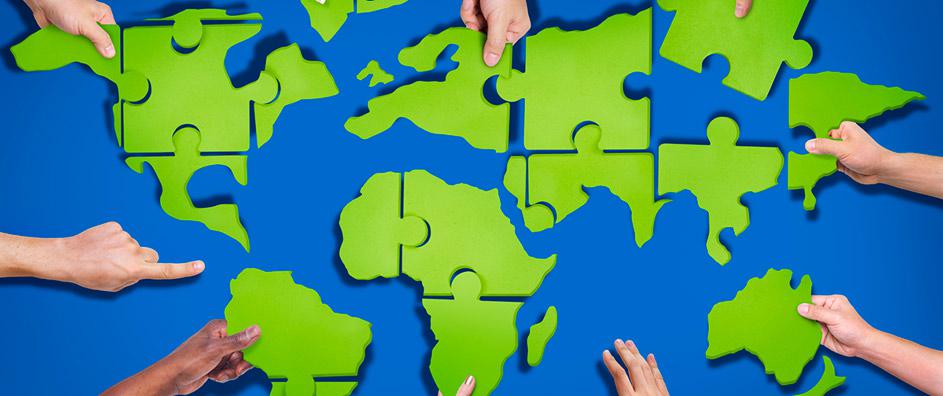In contemporary discourse, the notion of world unity emerges with increasing urgency, particularly within the vibrant context of spiritual teachings. The perspective posited by the Bahá’í Faith suggests that while world unity is indeed an existing reality, it has yet to manifest in its most ideal and transformative form. This discussion endeavors to explore the essence of this paradigm, elucidating the spiritual, social, and practical implications of achieving a more profound and harmonious global unity.
At the core of Bahá’í teachings lies the assertion that humanity is a single, interconnected family. This overarching idea is not merely a philosophical abstraction; it is a foundational tenet that invites adherents and non-adherents alike to reconsider the traditional divisions predicated upon nationality, ethnicity, and creed. The recognition of shared human dignity serves as a catalyst for a more enlightened perspective, shedding light on the potential for unity that exists even amidst visible discord.
To appreciate fully the assertion that “World Unity Exists—Just Not the Right Kind Yet,” one must first recognize the forms of unity that currently prevail. At times, these manifestations may appear superficial, imbued with the semblance of harmony yet devoid of genuine understanding or mutual respect. Political alliances, economic partnerships, and cultural exchanges, while noteworthy, often lack the depth requisite for true unity. They frequently operate within the confines of self-interest, illuminating the concept of unity that is transactional rather than transformational.
The Bahá’í perspective urges a departure from this circumscribed understanding. It envisions a unity imbued with a sense of spiritual brotherhood and sisterhood, wherein individuals transcend their personal ambitions in favor of collective advancement. Such a shift necessitates a fundamental change in how humanity perceives its interconnectedness. It challenges individuals to cultivate compassion and empathy, thus paving the way for a more robust and resilient global community enriched by diversity rather than stifled by it.
However, the pathway to this ideal unity is fraught with complexities. It is imperative to address the myriad sociopolitical, economic, and cultural barriers that inhibit authentic connection among individuals and nations. The fragmentation resulting from systemic inequality and injustice can obscure the innate bonds that link humanity. Thus, the pursuit of unity requires both a rigorous examination of these barriers and an unwavering commitment to equity and justice.
Bearing in mind the teeming landscape of global challenges, one can discern the very real potential for a shift in perspective that the Bahá’í teachings advocate. The convergence of crises—ranging from climate change to social unrest—compels humanity to reevaluate its priorities. In facing existential threats, individuals and nations may be driven to seek collaborative solutions, fostering an environment conducive to meaningful unity. Herein lies a promising dialectic where adversity can catalyze a reawakening of the understanding that genuine unity is not merely an aspirational goal but a pragmatic necessity.
A pivotal aspect of realizing this transformative unity is education. Education not only enlightens the intellect but also nurtures the spirit, promoting a deeper awareness of interconnectedness. The Bahá’í teachings emphasize the imperative of fostering a global educational framework that transcends geographical and ideological boundaries. Such an initiative could engender a more profound appreciation for humanity’s collective heritage and diversity, thus diminishing the barriers of prejudice and misunderstanding that often stymie collaborative efforts.
Moreover, the cultivation of a genuine sense of community is essential. The Bahá’í Faith advocates for the creation of local and global communities that embody unity in diversity, providing a fertile ground for dialogue and cooperation. These communities serve as microcosms of the larger world, demonstrating the potential for harmonious coexistence. The active engagement of individuals in such communities lays the groundwork for the eventual realization of global unity, as members embark on collaborative endeavors aimed at common goals.
Simultaneously, it is crucial to harness the potential of technology as a unifying force. In this digital age, communication barriers are gradually diminishing. Social media platforms and online forums can serve as powerful tools for connecting individuals across the globe, fostering a shared sense of responsibility and empathy. By leveraging these tools effectively, humanity can disseminate narratives that celebrate diversity while reinforcing our collective identity, thereby moving toward a more profound realization of unity.
Ultimately, achieving the “right kind” of world unity invites a multidimensional approach—a synthesis of spiritual insight, educational reform, community building, and technological innovation. It beckons humanity to transcend superficial divisions and embrace a more profound interconnectedness. As individuals awaken to their shared identity and collective mission, the possibility of transforming the existing, albeit flawed, forms of unity into something more substantive and enduring becomes increasingly attainable.
In conclusion, the Bahá’í teachings articulate a compelling vision: a world where unity is not merely an ideal but a tangible reality that elevates humanity. The awareness that world unity exists, albeit in an imperfect state, imbues hope and urgency to strive for a more profound and authentic connection. As the global community navigates the complexities of modernity, let this insight serve as a beacon, guiding endeavors toward a future brimming with possibility, equity, and genuine harmony.
